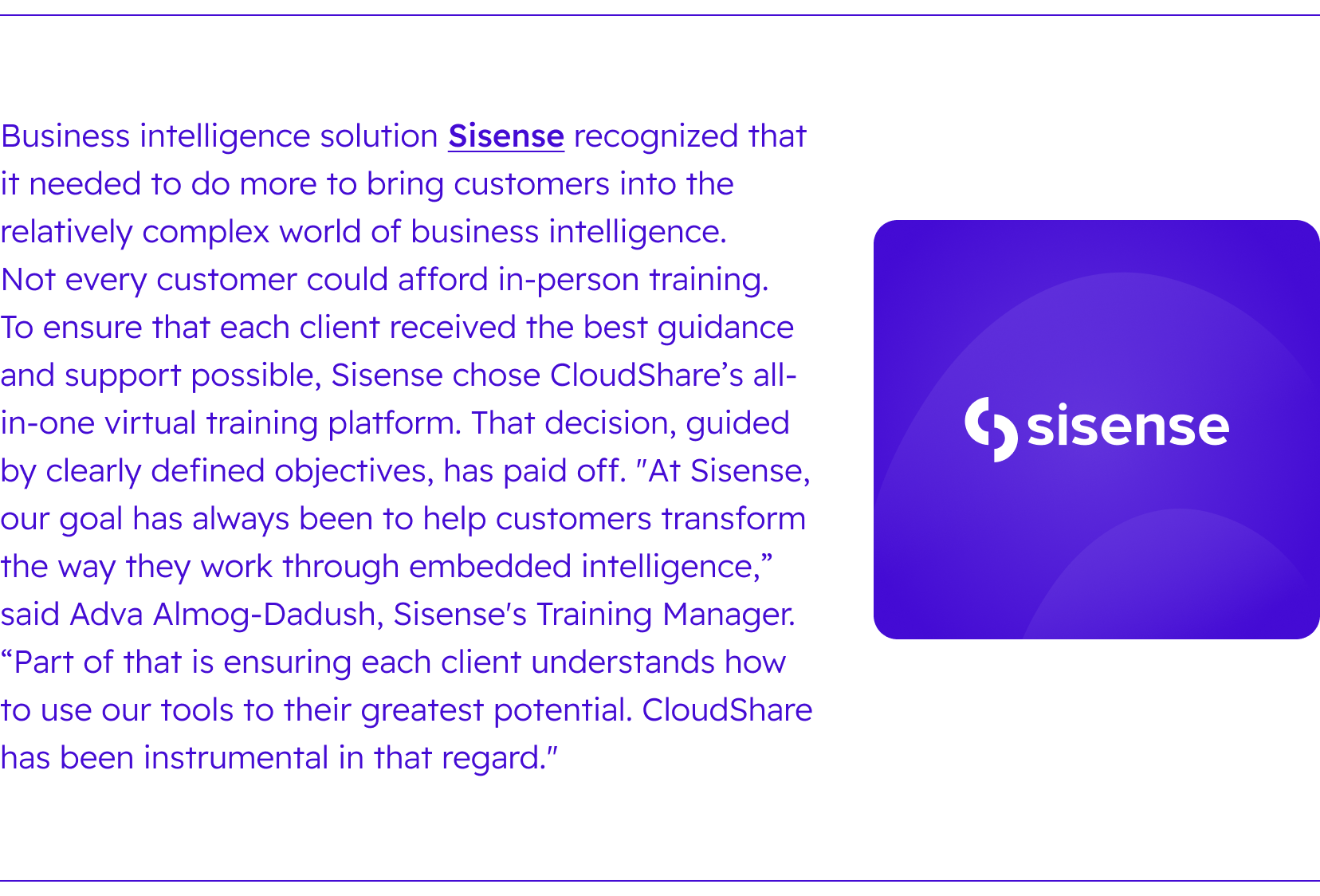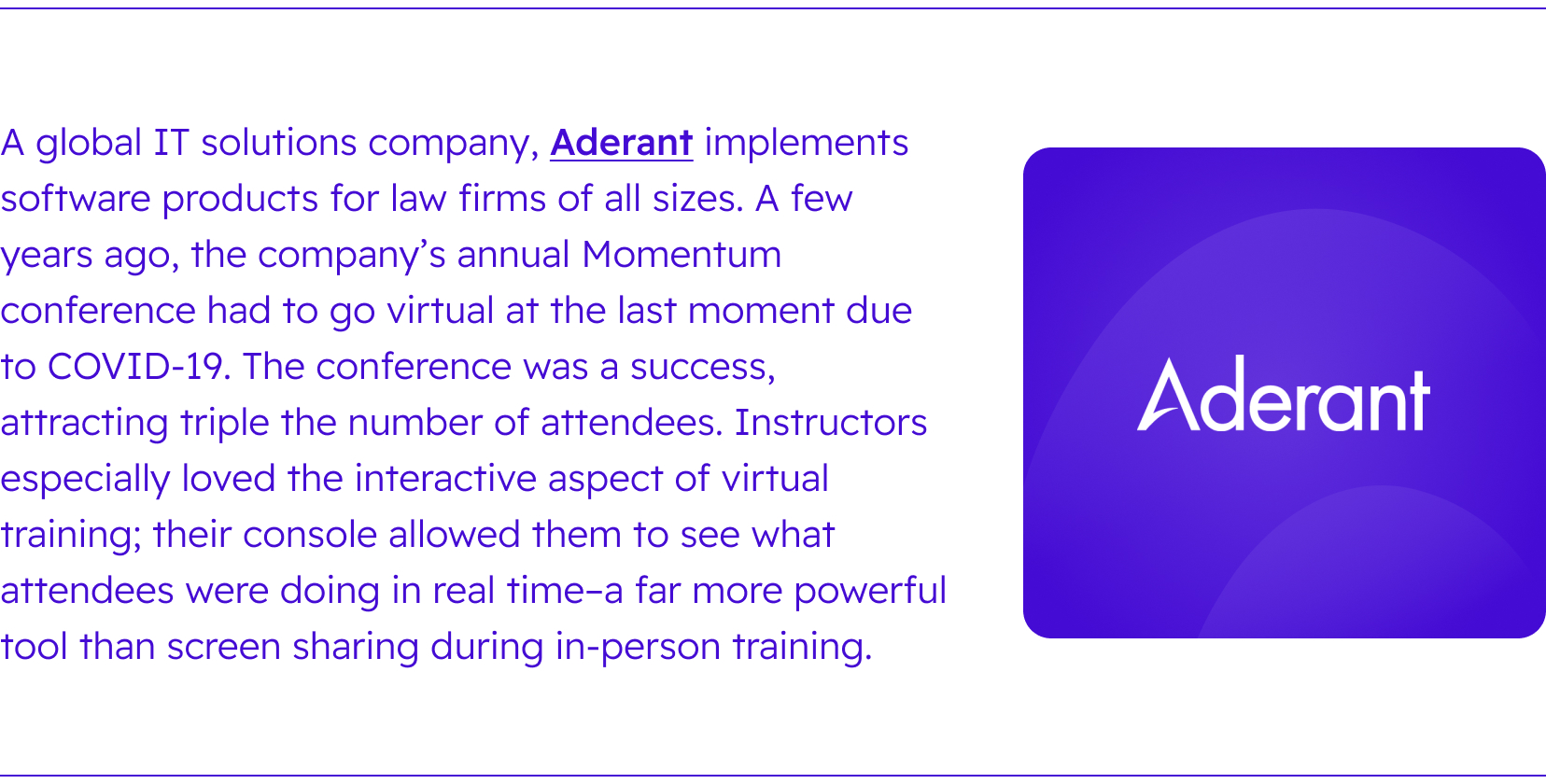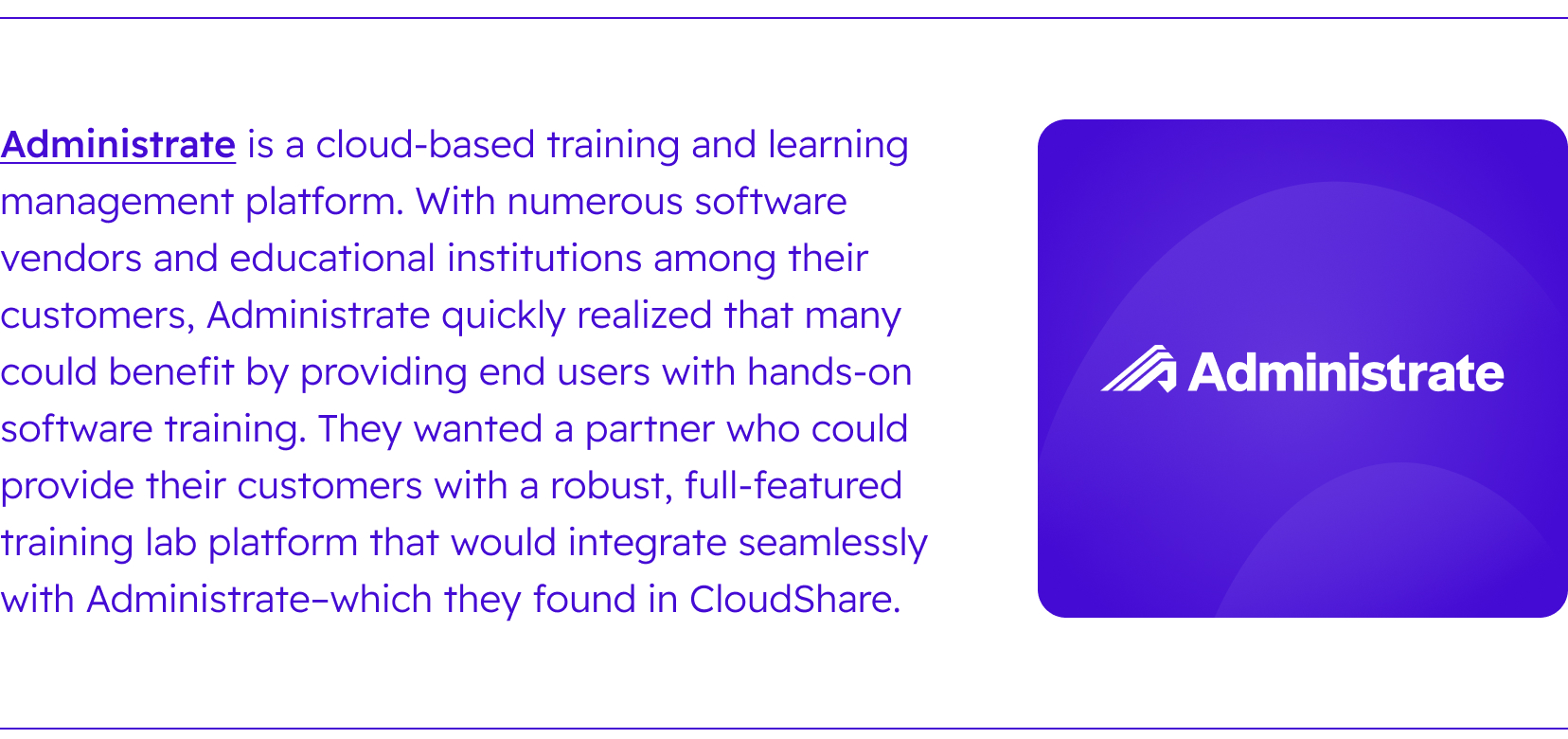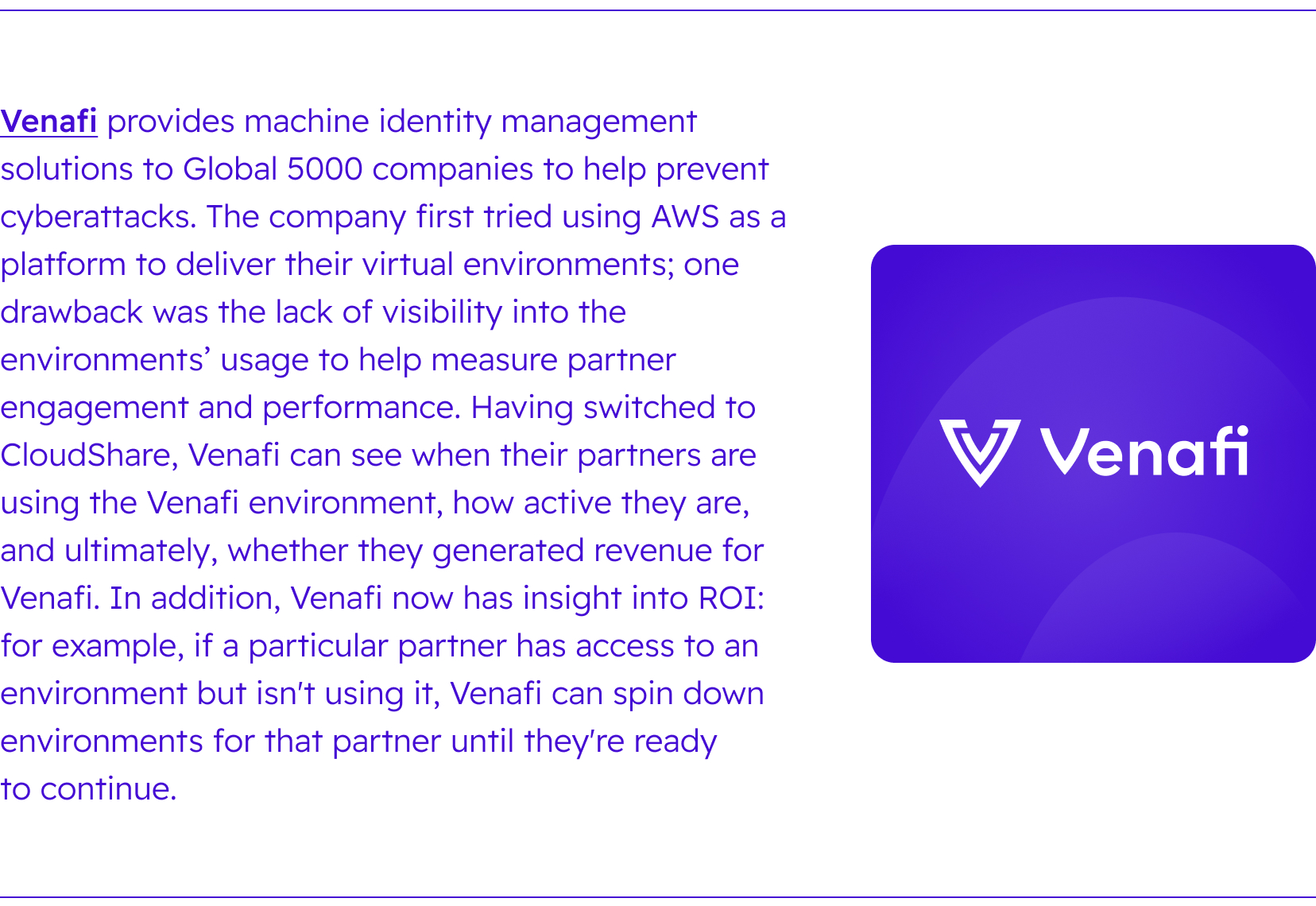
Virtual training
10 Best Practices for Building a Winning Self-Paced Customer Training Program
Introduction
In recent years, self-paced customer training has grown rapidly in popularity. In 2023 alone, self-paced course offerings increased by 20%.
What Is Self-Paced Training?
Self-paced training is the on-demand option of the customer training world. Forget meeting in a conference room with an instructor who’s traveled miles for a scheduled session. Self-paced training is available when customers want it, on their device, with no need to worry about keeping up with other learners.
What explains the surge in self-paced training? And why is it in your best interest to incorporate self-paced customer learning into your training strategy? Here are a few key reasons.
Hybrid workforce. Gartner forecasts that 51% of U.S. knowledge workers will work hybrid and 20% will be fully remote by the end of 2023. To support this increasingly distributed workforce, delivering customer training through the cloud is a necessity. It’s also effective: meta-analysis has shown that virtual learning is 19% more impactful than in-person learning.
Experience. Roughly 76% of customers who report a welcoming onboarding experience will continue using a product or service. Self-paced training provides unmatched flexibility, autonomy, and hands-on experiences, giving your organization the ability to control both the learning and sales environment. Notably, 58% of students prefer to learn at their own pace.
Scalability. To remain competitive in an evolving business landscape, companies must offer excellent product demos, onboarding, and customer training. The challenge is to achieve all that at scale. Self-paced training removes many limitations of scale and affordability (virtual training overall potentially reduces instruction time up to 60% and costs 50% less than physical training).
Of course, all this is assuming you develop an effective self-paced training program. It’s not simply a matter of adapting your existing training materials and technology. We’re talking about a completely different training modality. So how can you create or improve upon your self-paced customer software training program? Don’t worry—this eBook has you covered with best practices, tips, case studies, and more.
1. Clearly Identify Your Objectives
Every customer software training program, self-paced or guided, must begin with two questions:
- What do you want to achieve?
- How will you measure your progress towards that goal?
Answering these questions is essential in defining your key performance indicators (KPIs). In addition to helping you develop more focused training, clearly established KPIs prevent you from wasting time and resources on content that doesn’t deliver. Clear objectives also make it easier to refine and optimize your training over time.
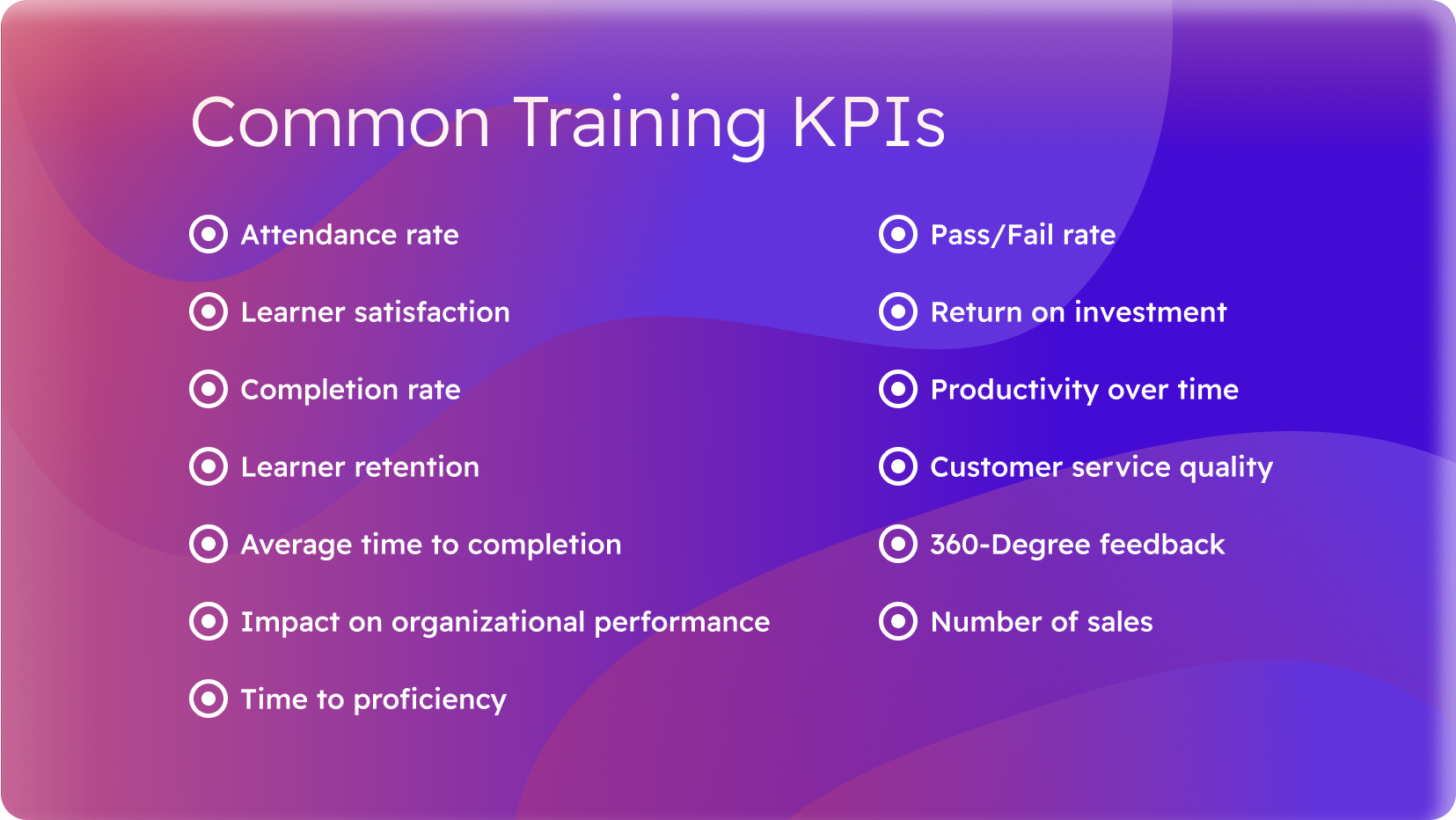
Defining Your Training Program’s Objectives
- Determine your organization’s needs: Why do you need this customer training program in the first place?
- Identify your learners: Who are you developing this software training program for?
- Define your desired learning outcomes: What knowledge, skills, or competencies do you want your training to develop?
- Consider how you’ll measure success: Your learning objectives should be specific, measurable, achievable, relevant and time-bound.
- Align your training objectives with your business objectives: What are the broader goals of your organization? Make sure your training objectives help you in the pursuit of those goals.
- Communicate: Make it absolutely clear to learners and other stakeholders what the training is meant to achieve and how it will do so.
2. Think Outside the Box
A good self-paced customer software training program incorporates a wide variety of different learning activities. Consider what makes your business unique, then see if you can translate that into engaging, differentiated training materials.
Here are a few tactics and techniques you might consider.
Microlearning
Delivering your course in bite-sized segments enables a training experience based on continuous learning. This approach aligns with still-influential research by 19th century psychologist Hermann Ebbinghaus that spaced repetition greatly increases learning retention. You can incorporate spaced repetition by encouraging students to review modules at increasingly larger intervals.
Gamification
Neuroscientists are constantly discovering more about how gamification features can improve learning, participation, and motivation. Game-like elements such as leaderboards, badges, and achievements encourage deeper engagement while friendly competition and tangible rewards give learners extra motivation to complete their training. Google, for instance, improved employee compliance by 100% through a gamified travel expense system.
Interactive Storytelling
Avoid static images and text dumps wherever possible. Instead, your course should feature plenty of interactive and dynamic content. If possible, that content should tell the story not just of how something is done, but also why.
3. Make Your Materials Easy to Digest
When developing your customer training materials, always keep in mind that less is more.
If your training is too complicated or information-dense, your learners are unlikely to retain much. According to Ebbinghaus, people forget nearly 50% of a lengthy piece of content within the first hour. They forget a whopping 70% of the material within 24 hours. Bear in mind that Ebbinghaus’s research was carried out in the 19th century, well before the era of information overload arguably cut our attention spans further.
This helps explain why microlearning has been found to boost retention by up to 80%. Instead of being overloaded with information, learners are drip-fed content in a way that’s easy to process and understand. Simple and streamlined will always be your best bet.
4. Create Opportunities for Collaboration
Self-paced customer software training doesn’t need to be done in isolation. On the contrary, learners do better when they communicate with one another and with their instructors. Our research indicates that socialization between learners increases course completion by up to five times.
To start with, you might consider establishing an external community forum where users can communicate. You could also incorporate chat functionality directly into your training software or use an integration with Slack to ensure instructors are automatically notified when a learner needs assistance. Integrated chat functionality can allow the instructor overseeing the program to proactively reach out to struggling students while allowing students to contact the instructor with any questions or comments. Over-the-shoulder capabilities—which allow the instructor to view and interact with a learner’s virtual environment—can provide instructors with another window for helping anyone who may be struggling.
5. Optimize Your Backend
Even a perfect software training program will fall apart without the right technology to support it. You need to be able to meet each learner where they are, on whatever device they happen to use. You’ll also need to ensure that multiple learners can connect simultaneously without impacting system performance.
A top compliance software provider, BWise wrestled for years with scaling up training operations, often turning down customer requests due to lack of capacity. CloudShare removed the hardware and software overhead with its cloud training platform. Next, following an acquisition, BWise had to merge systems with parent company SAI Global. In any acquisition, blending IT infrastructures is a challenge–but CloudShare’s fully hosted solution provided a backend that made migration hassle-free and seamless.
You, too, will want a cloud-based software training platform as your foundation. In most cases, however, this platform is only one part of your training technology stack. Although the specifics may vary, your technology stack should generally include the following.
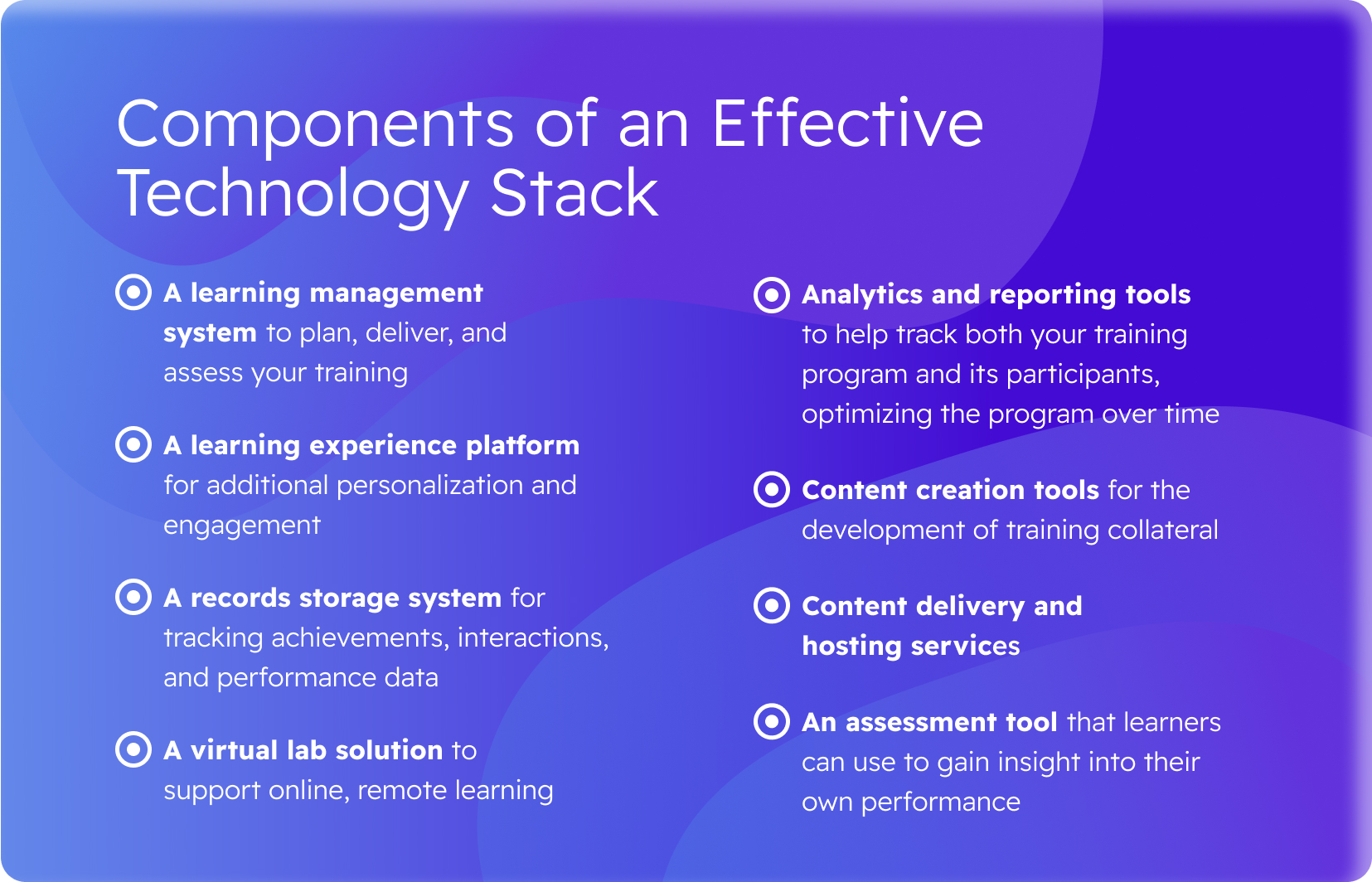
A single tool may fulfill several of these requirements simultaneously. You are unlikely, however, to meet all your training needs with a single technology. And even if you do, you may still need to connect your training infrastructure to the systems and tools used by other departments, such as sales and human resources.
This integration can generally be achieved in one of two ways:
- Webhooks send web-based messages to other platforms based on a set of predefined triggers. These can be used for anything from email messages to integrating with service platforms such as Zapier.
- A built-in API can be leveraged for more technically complex integrations or to connect with platforms that don’t support Webhooks.
6. Fully Embrace Virtual
Self-paced training is about giving participants the freedom to engage on their own schedule. That can’t be supported via a physical classroom. If you offer self-paced training, you must fully leverage the potential of virtual.
One global leader in cybersecurity solutions and services knew they needed to start offering virtual training: their in-person training approach limited their training capabilities and left their trainers stretched thin. Rather than trying to simply reuse their in-person materials online, the company built courses with CloudShare that took advantage of virtual tools. For example, a targeted malware reverse engineering course offers a self-guided learning experience with 50 videos, PDF downloads, and 100 hours of virtual lab time for hands-on learning. Working with CloudShare, the company created a virtual environment to practice decryption, reversing, dynamic analysis with visualization solutions and debuggers, and more.
As discussed previously, accessibility and scalability are critical. Your audience must be able to connect to your training environment whether they’re on a mobile device or a PC. This also means that your training interface should be developed and designed with mobile users in mind.
Keep your interface as clean and straightforward as possible. Avoid popup notifications and any other user interface blunders that may disrupt a student’s learning. Regardless of device, your audience should be focused on their learning material, not fumbling through a poorly designed interface.
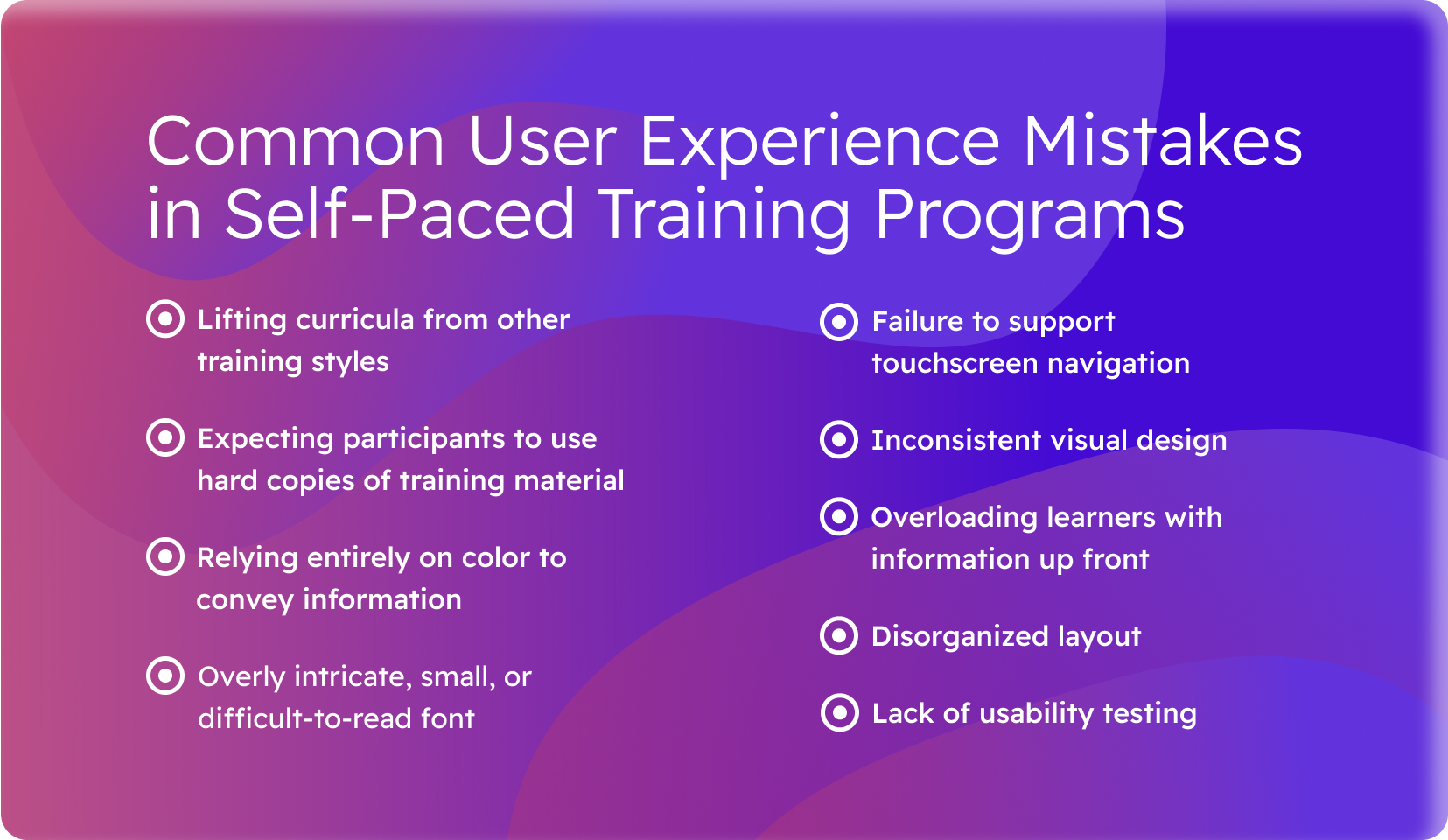
7. Give Learners a Personalized Plan
A structured learning plan can help learners stay focused and on-task as they progress through your training. It also provides a foundation for personalization.
Your customers are probably already expecting personalization: 95% of organizations believe personalized learning improves individual performance. Personalization could be as simple as allowing certain learners to skip material they’re familiar with, but you might also consider delivering the material differently depending on each person’s learning preferences and style. For instance:
- Visual learners might prefer videos and step-by-step diagrams detailing how the software works.
- Auditory learners might want to hear a verbal explanation of the software or discuss it with another participant.
- Read/Write learners may simply be satisfied with written descriptions of the software.
- Kinesthetic learners would likely prefer to learn the software by experimenting with it in a sandbox.
Providing more kinds of learning content represents an upfront investment of time, but anecdotal evidence suggests it can lead to far higher rates of adoption. Since it’s not always feasible to provide a different set of materials for each learner, your best bet is to design your training program to appeal to all four learning styles, at which point you can emphasize or de-emphasize certain materials as needed.
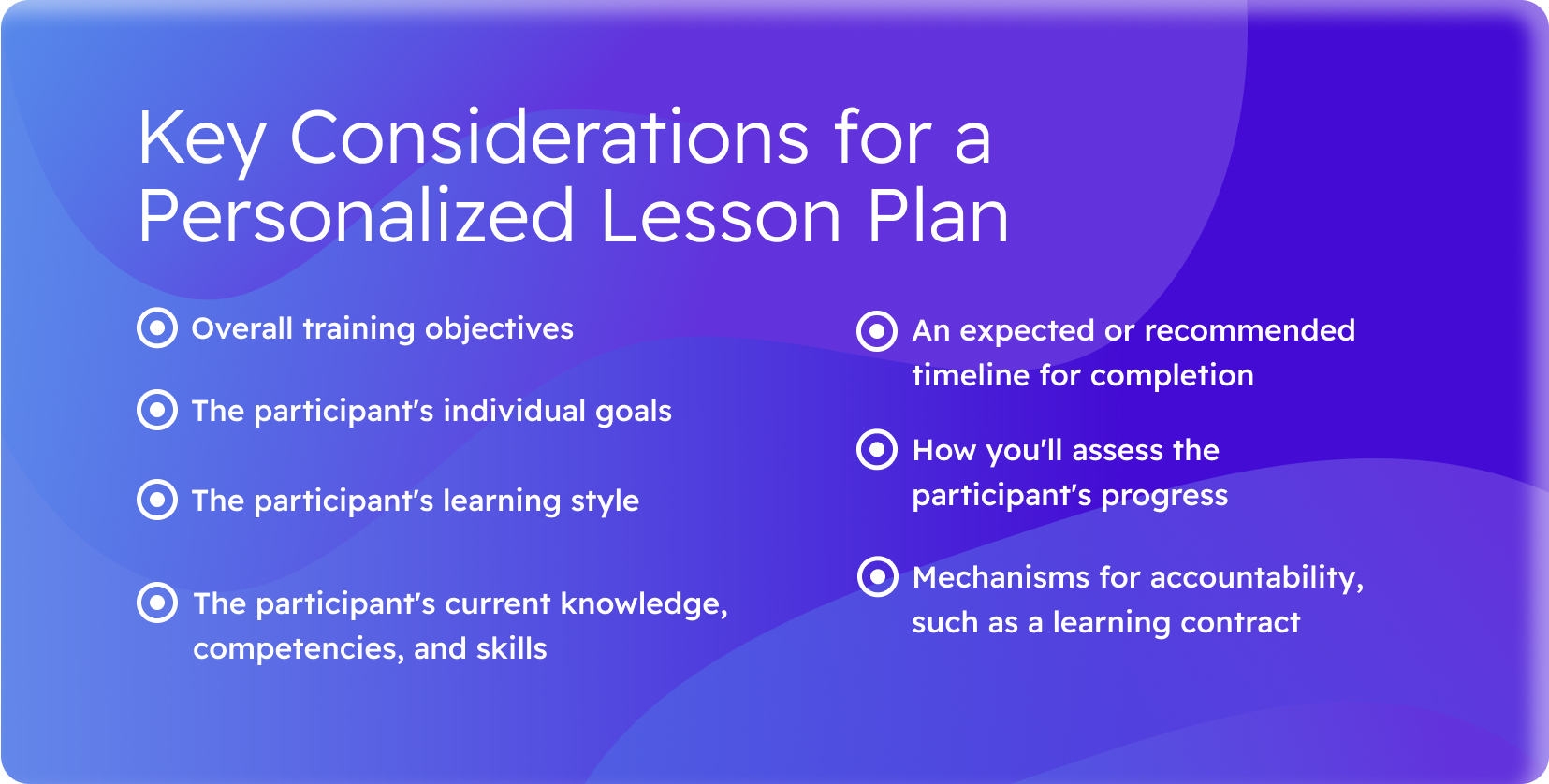
8. Provide Hands-on Experiences
Self-paced training is not a new concept. Companies have long provided supplementary training materials such as videos, how-to guides, and online knowledge bases to their customers. The problem with these materials is that they’re all entirely passive—they don’t tap into the hands-on potential of self-paced virtual training.
To truly resonate with participants, your self-paced training program needs to provide a high level of interactivity. It should give students the opportunity to actually explore your software themselves, developing practical knowledge, then putting that knowledge to the test. By and large, the best way to achieve this is with virtual training labs.
These cloud-based classroom environments serve as a replacement for both passive, classroom-based learning and traditional IT labs. They provide students with a direct, remote interactive connection to a sandboxed training environment where they can learn and explore.
9. Measure and Monitor
You can only get so far on intuition and observation. Training is and always has been a data-driven pursuit. For that reason, it’s imperative that once you’ve defined your KPIs, you track them.
Tracking KPIs means you’ll be able to optimize your training program over time and measure your progress towards your end goal. Combine this functionality with comprehensive reporting tools and you’ll also be able to demonstrate that progress to leadership.
Analytics and reporting aren’t only for calculating your ROI. They’re also crucial for assessing student performance. Not only does this information help instructors identify anyone who’s at risk of quitting, it can also provide learners with insight into their own performance.
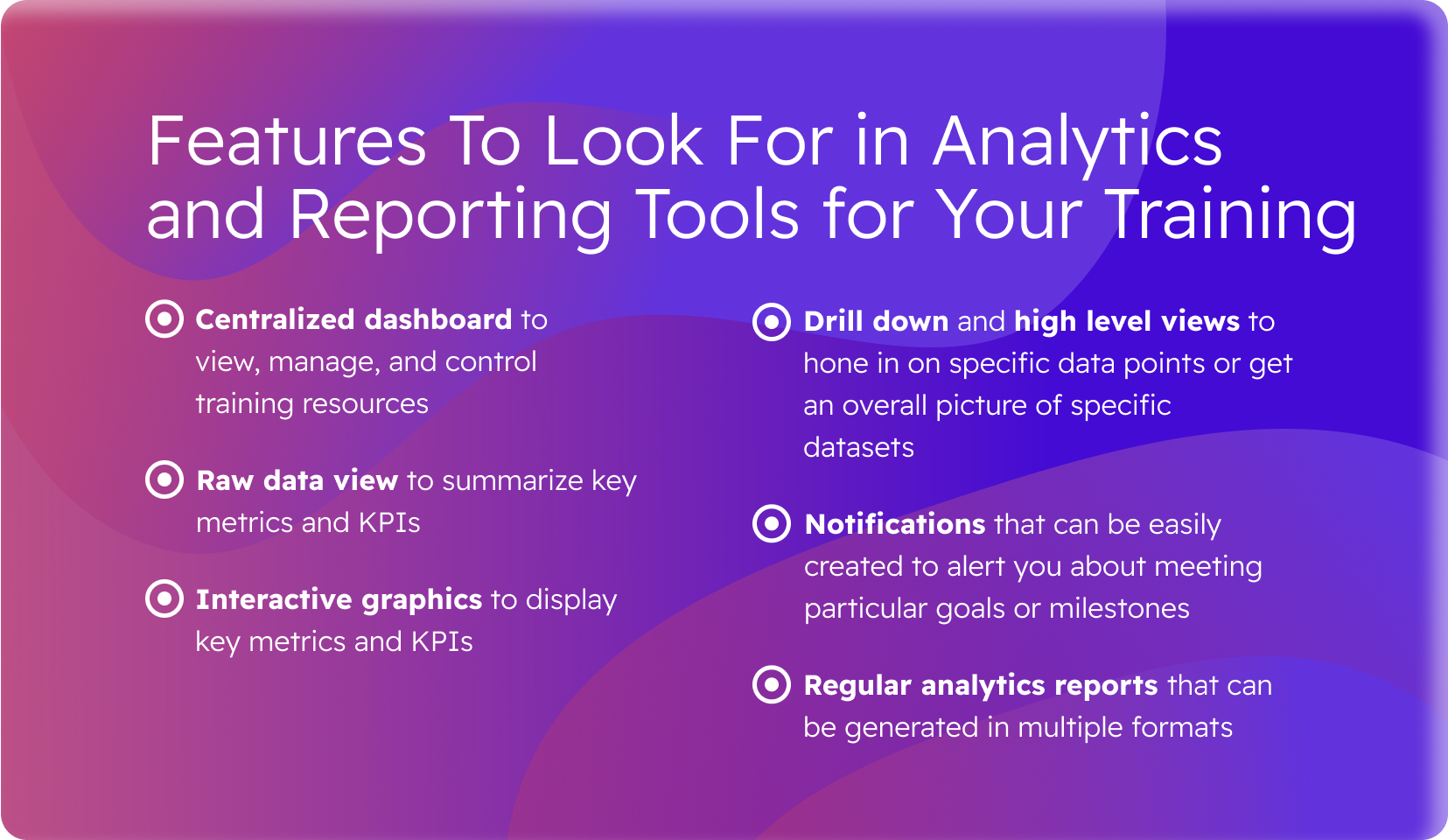
10. Incorporate Feedback
Feedback is an important part of any successful customer software training program—not just for learners, but for you, as well. By providing customers with post-training surveys, you can more effectively identify any shortcomings with your content and delivery. You can apply the same principles to these surveys as to your training program itself:
- Keep it concise and straightforward.
- Improve your response rate through gamification.
- Consider using micro surveys throughout training rather than a single survey at the end.
You can’t just collect feedback from your participants, however. You also need to provide it. At the most basic level, this means supplying students with guidance on how they performed and what they can do to improve in the future.
You might also consider offering rewards for completion or exceptional performance. Even a simple badge or a certificate can be surprisingly motivating. Some training programs even take things a step further and provide students with real-world incentives or prizes. (One thing you should never do, however, is penalize low performers.)
Ready to Create a Successful Self-Paced Customer Software Training Program?
Customer software training is more important than ever. In a rapidly changing business landscape defined by hybrid work and digital transformation, your business must provide its customers with smooth onboarding and the knowledge and skills to keep up.
Despite the freedom and flexibility, self-paced training isn’t for everyone, nor is it a good fit for every training initiative. Some learners may struggle to focus due to lack of structure and time constraints. Others may find the training too isolating and instead prefer a classroom setting, even a virtual one. If the customer’s environment or your software are complex or highly technical, you might need an instructor or sales professional present to provide direct guidance.
Self-paced customer training is one effective way for people to learn–and a way for you to reduce your support team’s workload while ensuring your customers can effectively use your software in practice–but it’s not the only valid option. In many cases, self-paced customer training works well in tandem with virtual instructor-led training and even offline instruction, to ensure your customers are guided and supported through all stages of the customer journey.
Many businesses are already combining the best of all worlds. Corporate blended learning programs, mixing online and offline instruction, are expected to grow almost 13% every year from 2023–2027. Another important option, hybrid learning programs train both remote and physical audiences simultaneously.
Remember the 70-20-10 model for learning and development. People obtain 70% of their knowledge from hands-on experience, 20% from interpersonal interaction, and 10% from formal learning. The right self-paced training program or program combination can take a play and break approach that effectively supports the entire model.
CloudShare makes it easy to achieve all that and more. Contact us today to learn more about what our platform can do and how we can help you build a better self-paced customer software training program.
About CloudShare
CloudShare is a leading software experience platform that helps software companies increase customer acquisition and retention by creating highly engaging hands-on virtual training, POCs, demos, and testing environments in minutes.
Our virtual environments are easily replicated in the cloud and purpose-built to generate user engagement that ultimately impacts key business metrics such as customer retention, repeat purchase rates, lower support costs, higher win rates, faster sales cycle, and more.
To learn more about how we can help you improve customer acquisition and retention in your organization, get in touch with our expert team today.
